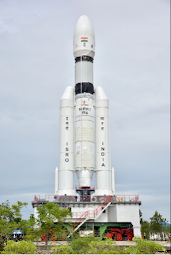iPhone 15 : Apple is said to lunch 5 iPhone this year, price of new model topped
The iPhone 15 series will officially launch on September 12, which is next week. At This upcoming event, Apple is expected to unveil not only the next-generation iPhone 15 and iPhone 15 Plus but also a pro model, along with two more Ultra-high-end Flagship devices. These could be iPhone 15 Pro Max and Ultra.
iPhone 15 सीरीज आधिकारिक तौर पर 12 सितंबर यानी अगले हफ्ते लॉन्च होगी। प्राइस आगामी इवेंट में, Apple द्वारा न केवल अगली पीढ़ी के iPhone का अनावरण करने की उम्मीद है 15 और iPhone 15 Plus लेकिन दो और अल्ट्रा-हाई-एंड के साथ एक प्रो मॉडल भी है फ्लैगशिप डिवाइस. ये iPhone 15 Pro Max और Ultra हो सकते हैं।
The iPhone 15 series will officially launch on September 12,which is next week. At this upcoming event, Apple is expected to unveil not only the next-generation iPhone 15 and iPhone 15 Plus b;ut also a pro model, along with an additional ultra-high-end flagship device.
However, tipster Majin Bu is now claiming on Twitter that Apple will launch at least 5 iPhone this year. THe rumour mill so far suggested that either an iPhone 15 pro or an Ultra model could launch this year models, even though they are expected to share the same specification.
iPhone 15 सीरीज आधिकारिक तौर पर 12 सितंबर यानी अगले हफ्ते लॉन्च होगी। इस आगामी इवेंट में, Apple द्वारा न केवल अगली पीढ़ी के iPhone 15 और iPhone 15 Plus का अनावरण करने की उम्मीद है, बल्कि एक अतिरिक्त अल्ट्रा-हाई-एंड फ्लैगशिप डिवाइस के साथ एक प्रो मॉडल भी पेश किया जाएगा।
हालाँकि, टिपस्टर माजिन बू अब ट्विटर पर दावा कर रहे हैं कि Apple इस साल कम से कम 5 iPhone लॉन्च करेगा। अफवाह फैलाने वालों ने अब तक सुझाव दिया है कि या तो iPhone 15 प्रो या अल्ट्रा मॉडल इस साल लॉन्च हो सकता है, भले ही उनके समान विनिर्देश साझा करने की उम्मीद है।
The iPhone 15 Pro Max is tipped to come with 6GB of RAM and up to 1TB storage option. The iPhone 15 Ultra is poised to take things a step further. The tipster explains that this version could come with 8GB of RAM and a whopping 2TB storage option.
Additionally, the iPhone 15 Ultra model is also said to come with improved camera features than the regular Pro model.
While both models are said to share the rest of the features, the iPhone 15 Ultra could come with a slightly higher price tag, potentially costing an additional $100 (approximately Rs 8,000) over the iPhone 15 Pro Max.Speaking of which, the leaks have claimed that the iPhone 15 Pro Max could be priced at $1,299, up from last year's model price of $1,099. In India, Apple could announce the new Pro Max model at Rs 1,59,900 because the company pegs each dollar at Rs 100, according to the rumours. If we go by the latest leak, the price of the iPhone 15 Ultra will be over Rs 8,000 more than the Pro Max.
This means that Apple might launch the new Ultra model at Rs 1,67,900.
iPhone 15 Pro Max के 6GB रैम और 1TB तक स्टोरेज विकल्प के साथ आने की खबर है। iPhone 15 Ultra चीजों को एक कदम आगे ले जाने के लिए तैयार है। टिपस्टर बताते हैं कि यह संस्करण 8GB रैम और 2TB स्टोरेज विकल्प के साथ आ सकता है। इसके अतिरिक्त, iPhone 15 अल्ट्रा मॉडल को नियमित प्रो मॉडल की तुलना में बेहतर कैमरा सुविधाओं के साथ आने के लिए भी कहा गया है।
जबकि कहा जाता है कि दोनों मॉडल बाकी सुविधाओं को साझा करते हैं, iPhone 15 Ultra थोड़ी अधिक कीमत के साथ आ सकता है, संभावित रूप से iPhone 15 Pro Max की तुलना में इसकी कीमत अतिरिक्त $100 (लगभग 8,000 रुपये) होगी।जिसके बारे में बात करते हुए, लीक में दावा किया गया है कि iPhone 15 Pro Max की कीमत $1,299 हो सकती है, जो पिछले साल के मॉडल की कीमत $1,099 से अधिक है।
भारत में, ऐप्पल नए प्रो मैक्स मॉडल को 1,59,900 रुपये में घोषित कर सकता है क्योंकि अफवाहों के अनुसार कंपनी प्रत्येक डॉलर की कीमत 100 रुपये तय करती है। ताजा लीक की मानें तो iPhone 15 Ultra की कीमत Pro Max से 8,000 रुपये ज्यादा होगी। इसका मतलब है कि Apple नए अल्ट्रा मॉडल को 1,67,900 रुपये में लॉन्च कर सकता है।
In Short
The iPhone 15 series will officially launch on September 12, which is next week.
Apple is tipped to announce 5 iPhones this year.
Both iPhone 15 Ultra and iPhone 15 Pro Max are said to debut.
संक्षेप में
iPhone 15 सीरीज आधिकारिक तौर पर 12 सितंबर यानी अगले हफ्ते लॉन्च होगी।
माना जा रहा है कि Apple इस साल 5 iPhones की घोषणा कर सकता है।
कहा जाता है कि iPhone 15 Ultra और iPhone 15 Pro Max दोनों पहली बार लॉन्च होंगे।












